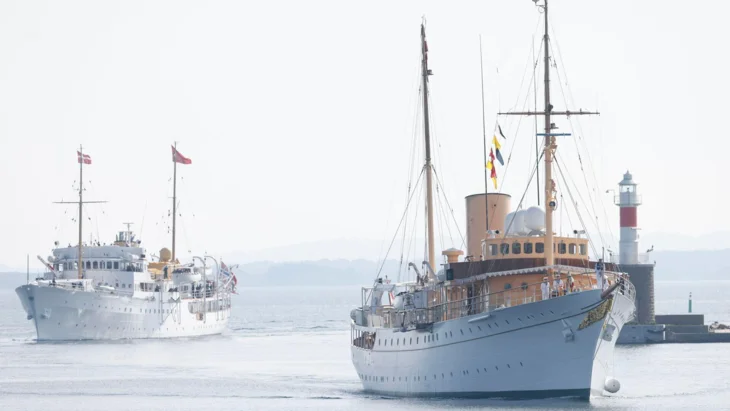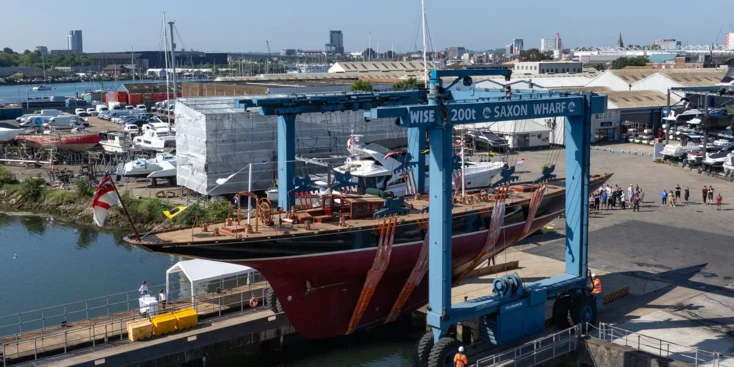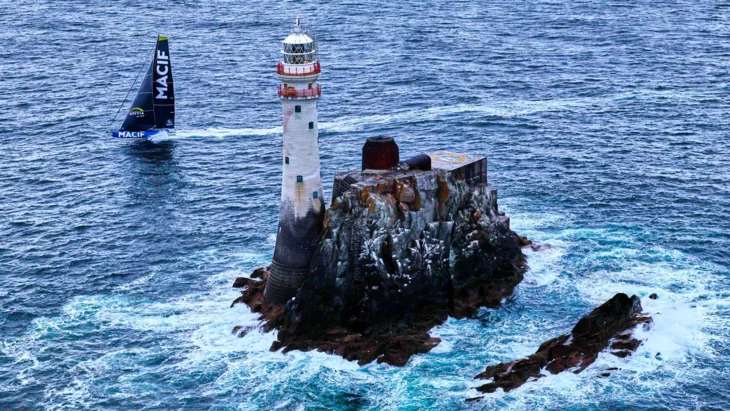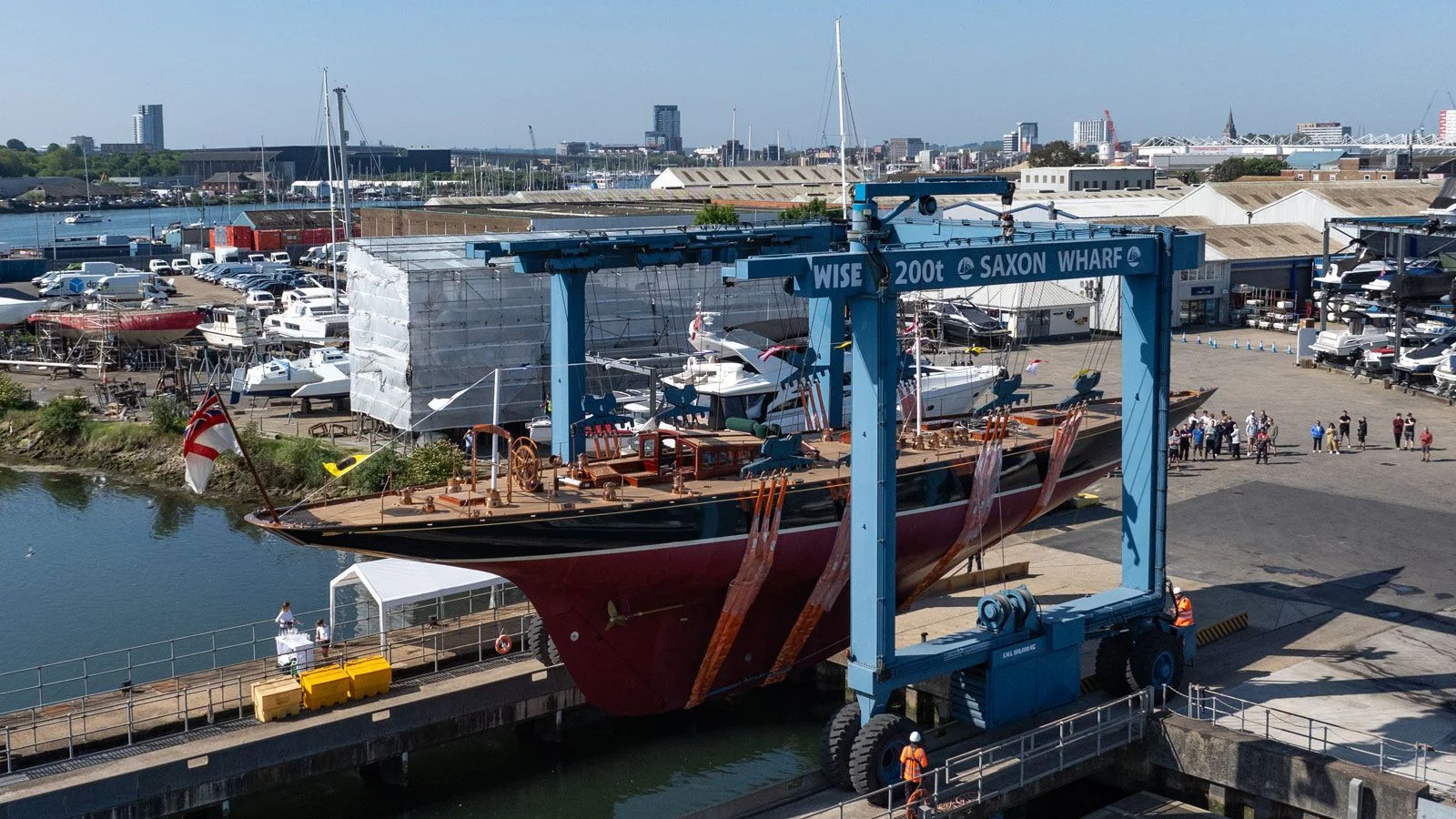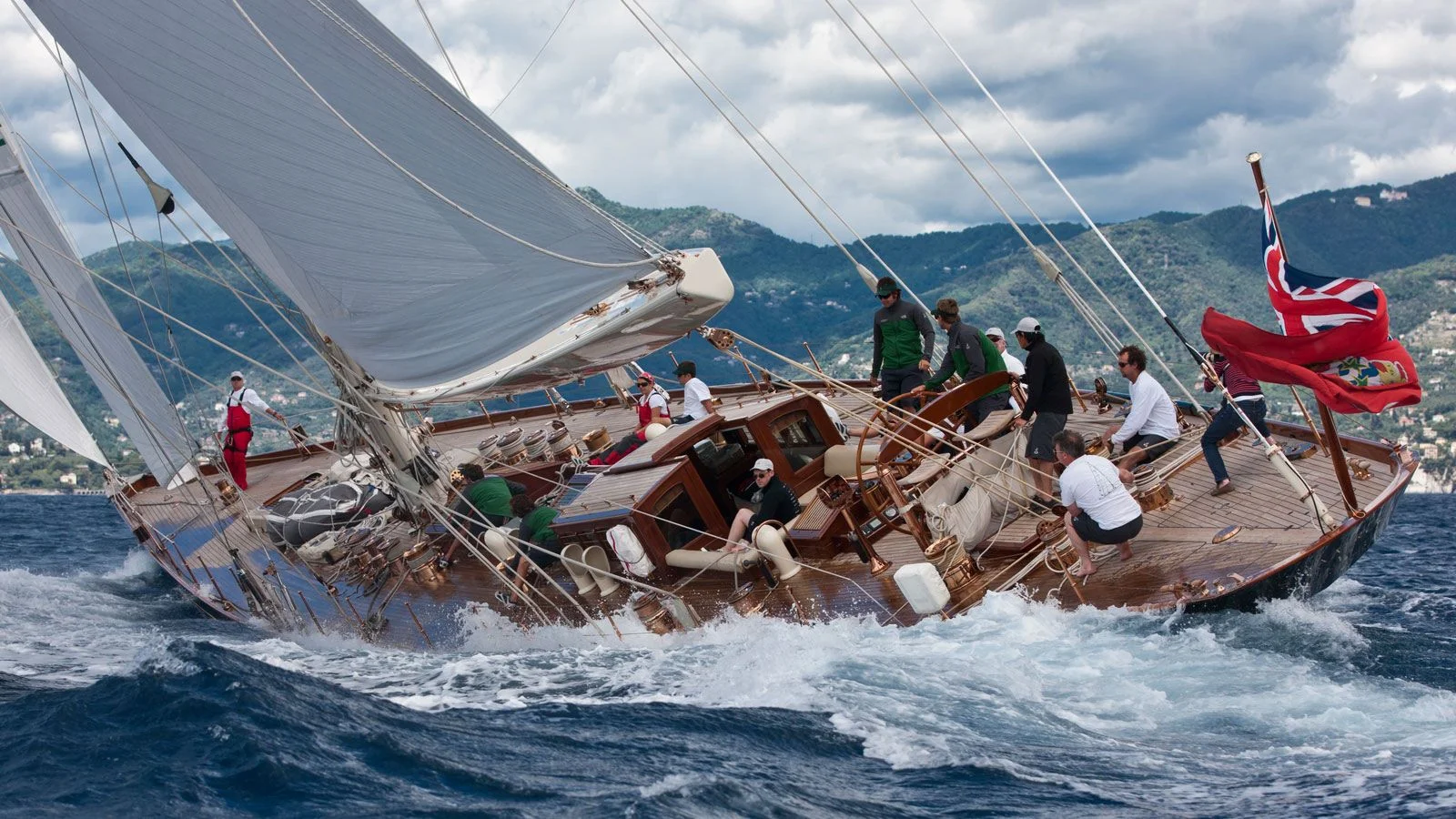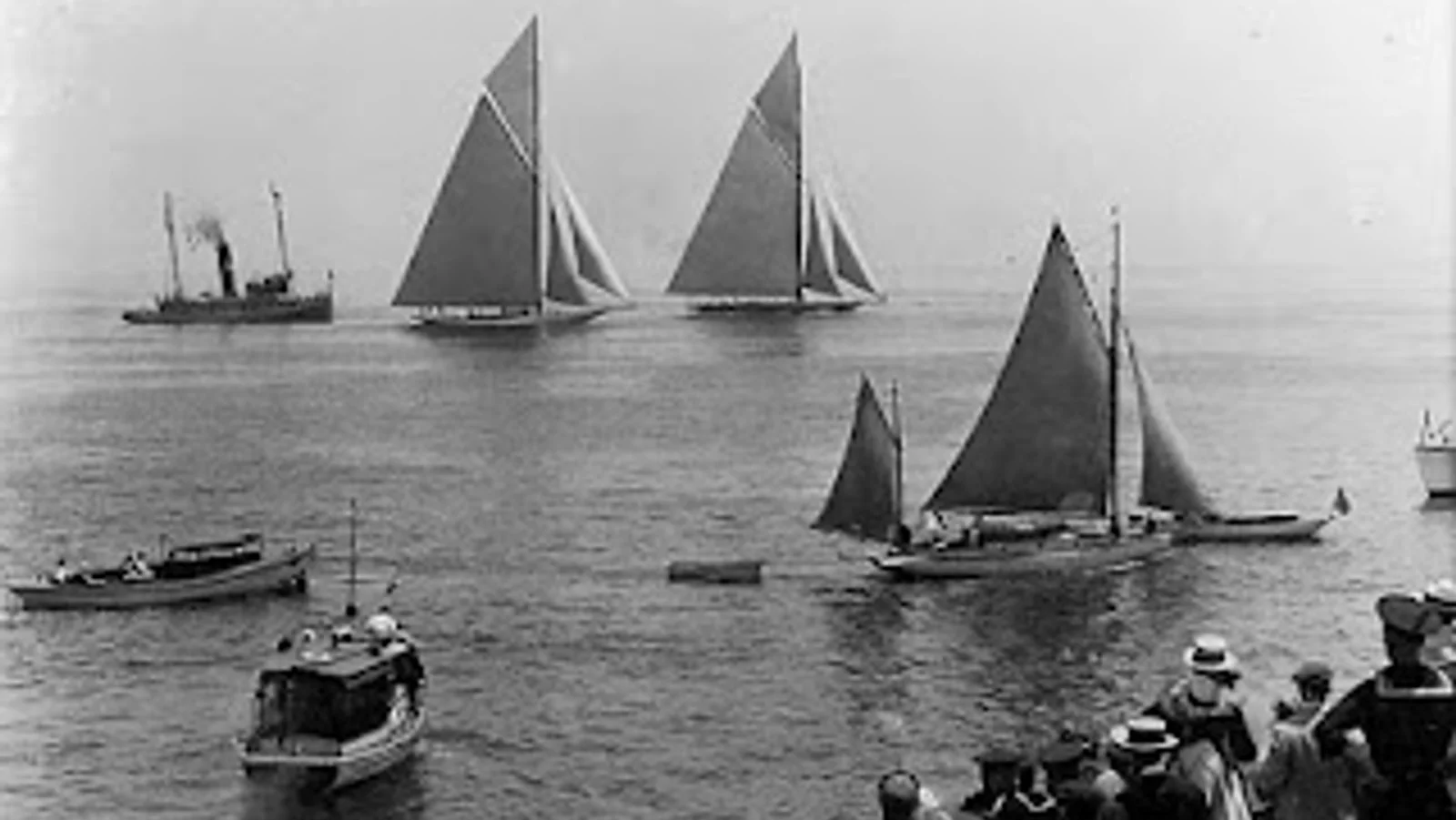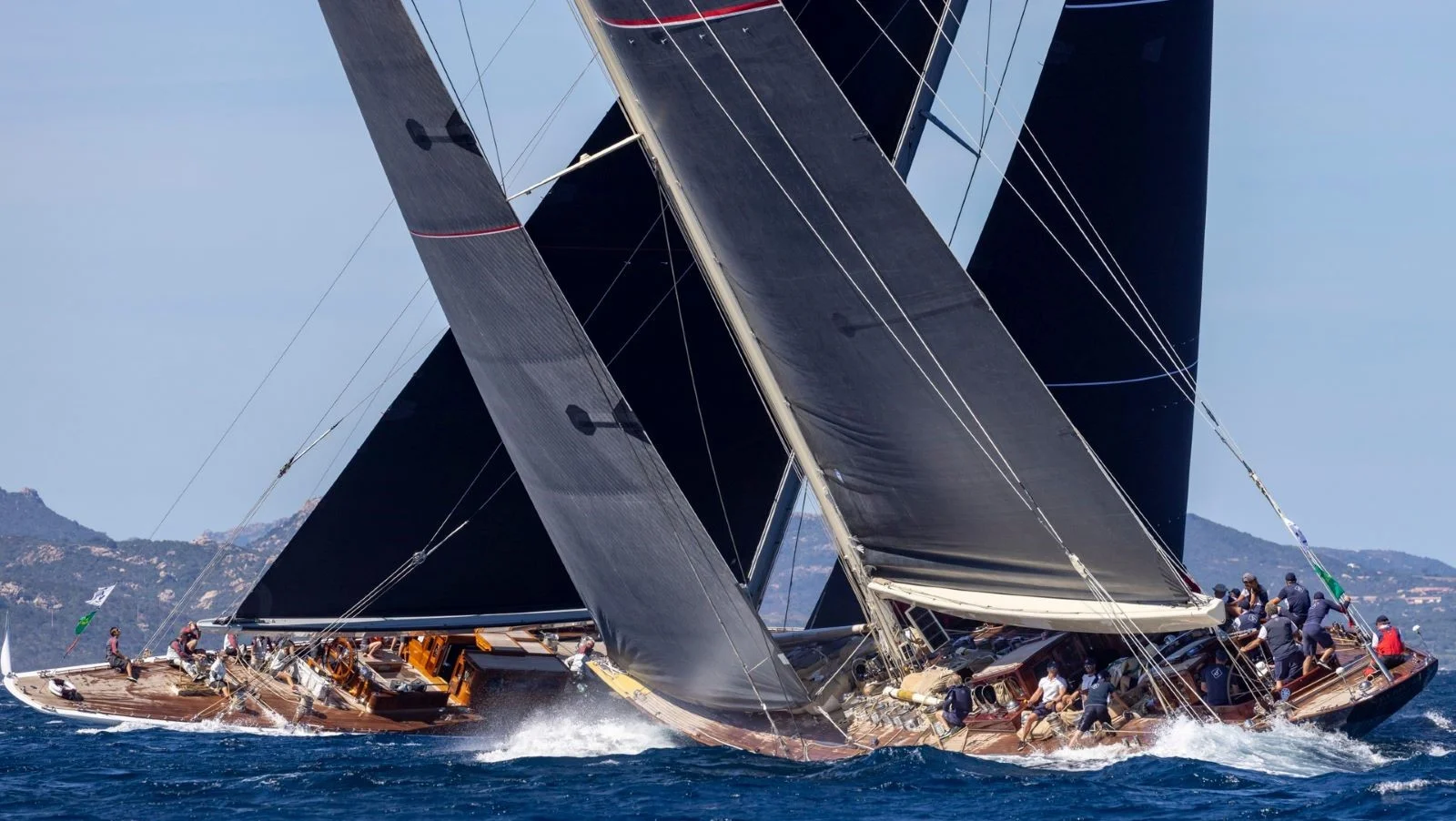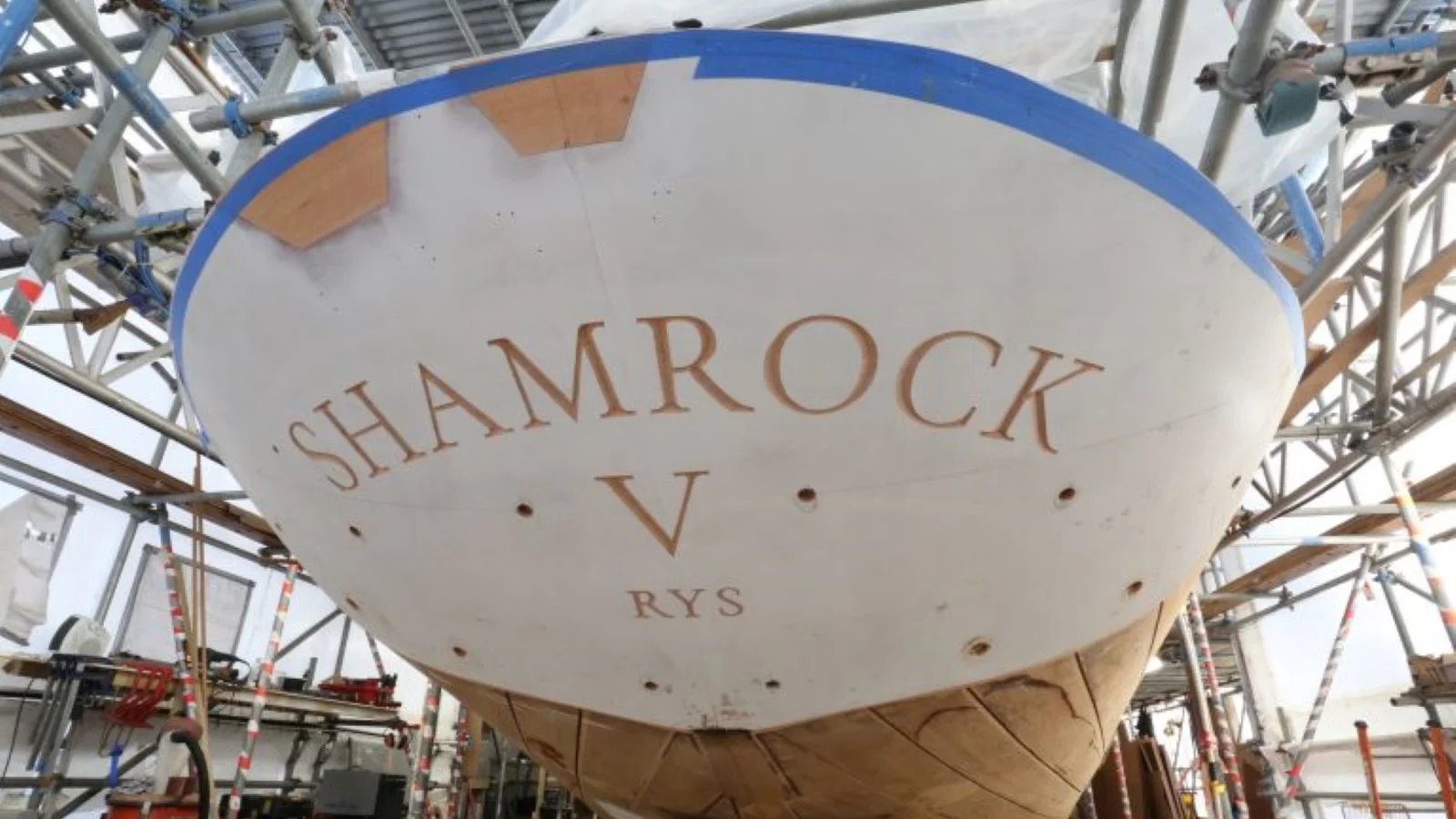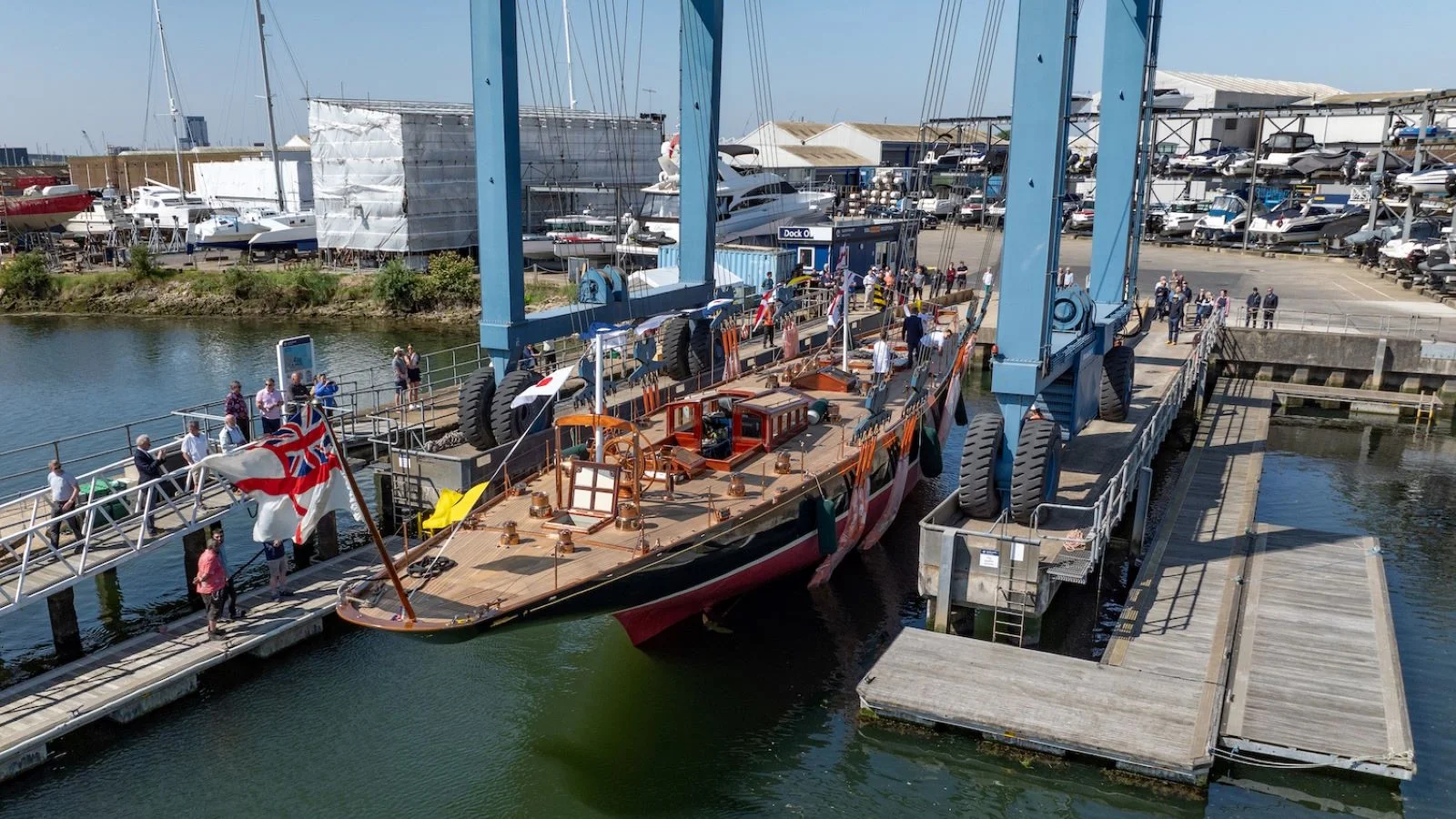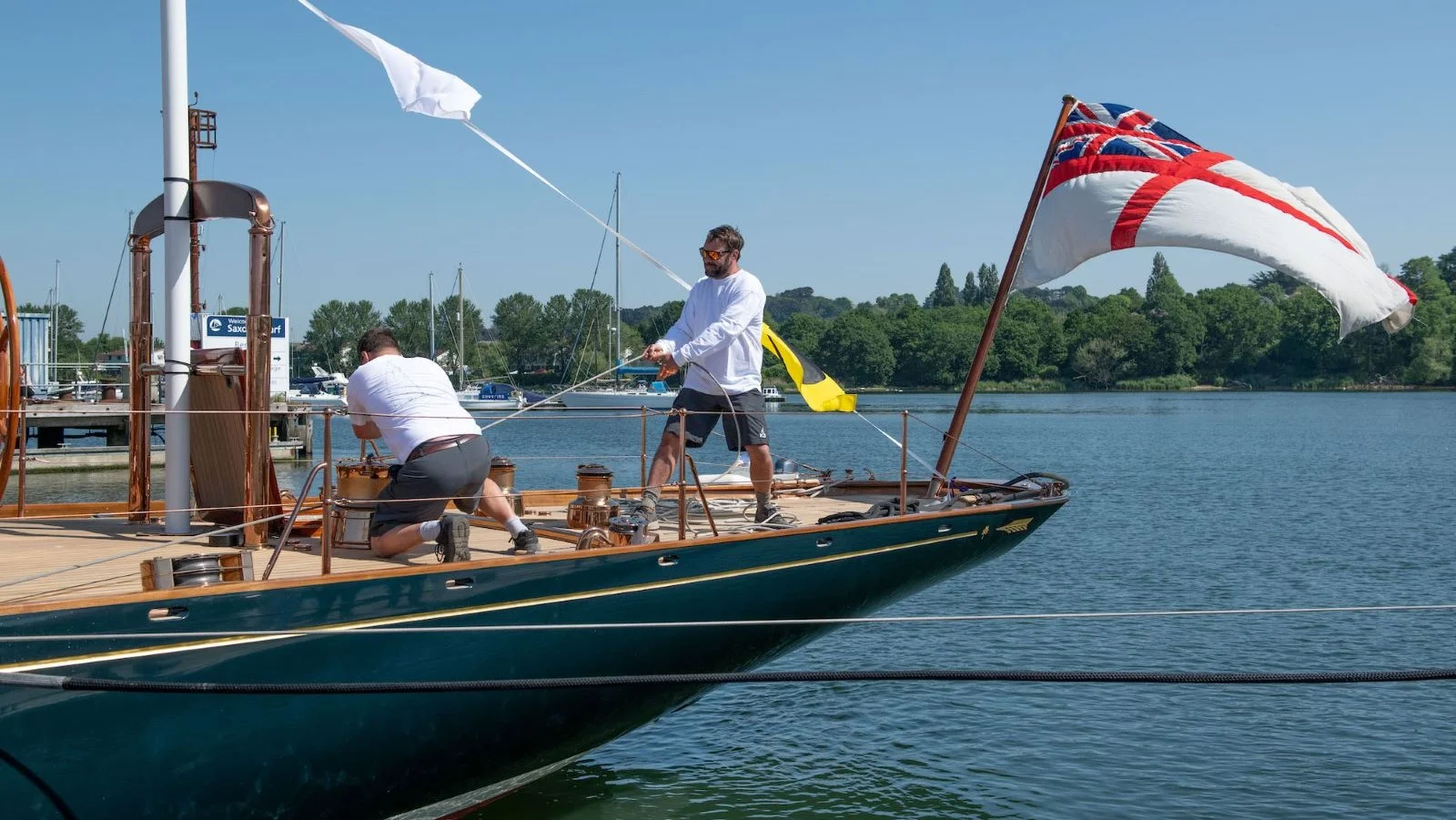Shamrock V: the return of the Queen
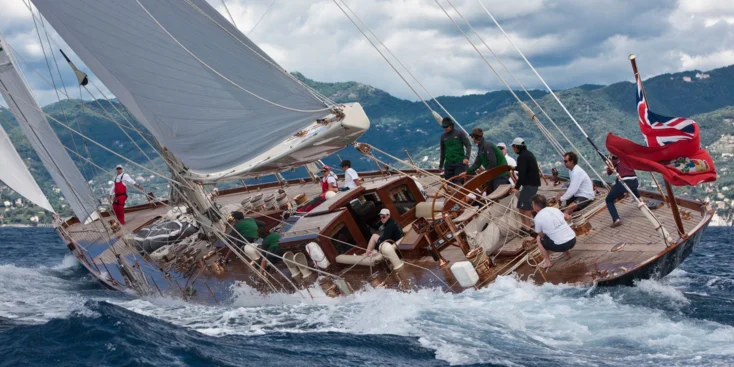
After the structural damages she suffered in 2017, she did not just need an overhaul, but a complete restoration and stripping the hull down to the steel ribs. And now the legend is back on the water
Shamrock V was called nothing less than “the Queen of the J Class". She was the first to be built in this family and the only one to be made in wood, and has a historical value also due to the fact that out of all ten of authentic J’s she had not left operation since her launch. Other J’s considered to be authentic are Velsheda and Endeavour, although both of them were reconstructed after dozens of years of dereliction. The other six in the J Class that is now being revived – Ranger, Svea, Topaz, Hanuman, Lionheart and Rainbow – are just perfect replicas.
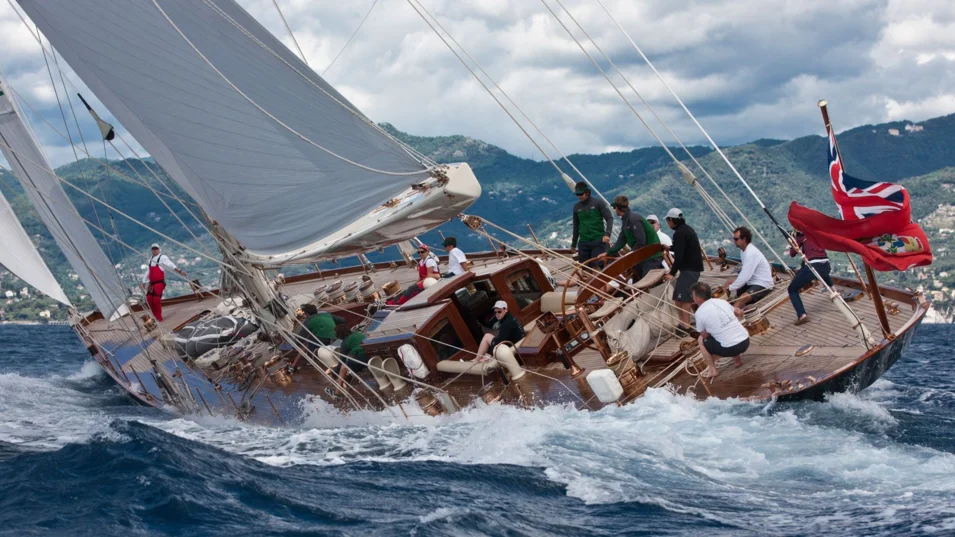
The heroine’s pedigree
Where does the Roman numeral five in her name come from? The story goes back to 1898, when tea magnate Sir Thomas Lipton decided to issue a new challenge to the New York Yacht Club in a regatta for the America’s Cup. He commissioned one of the best- known constructors of the time, William Fife, to build his first yacht named Shamrock. The defender of the trophy was Columbia, designed by no less famous Nathanael Herreshoff. Both boats were 40 metres long. Americans won.
Shamrock II for the 1901 race was designed by George Watson. The same Columbia won again, by a narrow margin.
For the next 1903 race the restless Scot came again, this time on 40.9-metre Shamrock III designed by Fife again. Americans entered the 60-metre Reliance, largest gaff-rigged cutter ever built, which was dubbed “a racing freak” (the hull was absolutely empty), built for speed and only particular wind conditions. After another failure, Lipton said his famous phrase: “They tell me I have a beautiful boat. What I want is a boat to lift the Cup.”
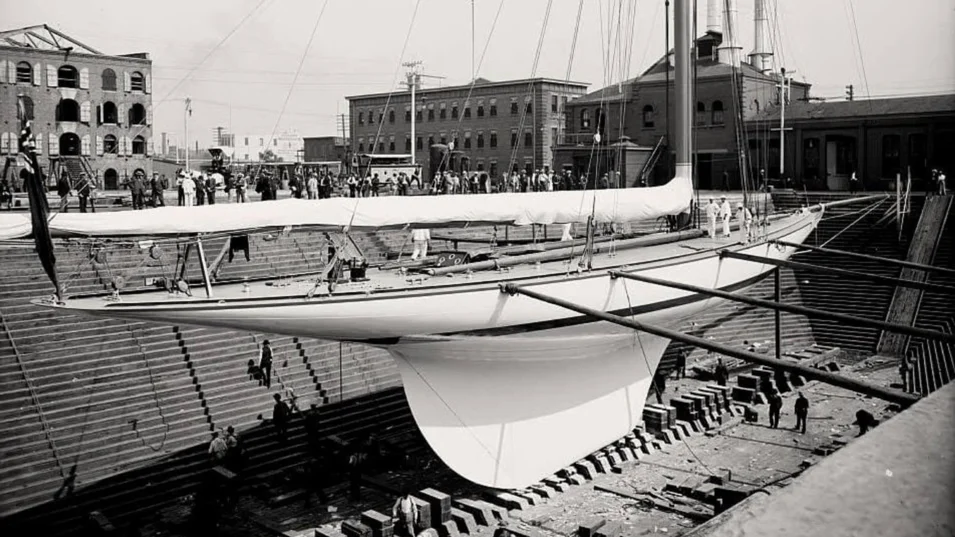
By 1914 Shamrock IV, designed by Charles Nicholson, was ready, but while she was crossing the Atlantic, the First World War started, so the challenge took place only in 1920. Now nobody said Lipton’s boat was beautiful, but she could win the first two races against Resolute (Herreshoff's project), although in the end, the American defender of the trophy won again 3 to 2.
It is interesting to note that Sir Lipton’s decision to make his yacht open to the public (over 30 thousand people visited Shamrock IV in a few days) turned out to be good for the regatta, as it contributed to its popularity significantly. The competition acquired a truly iconic status not only among wealthy yachtsmen, but a wide audience, too.
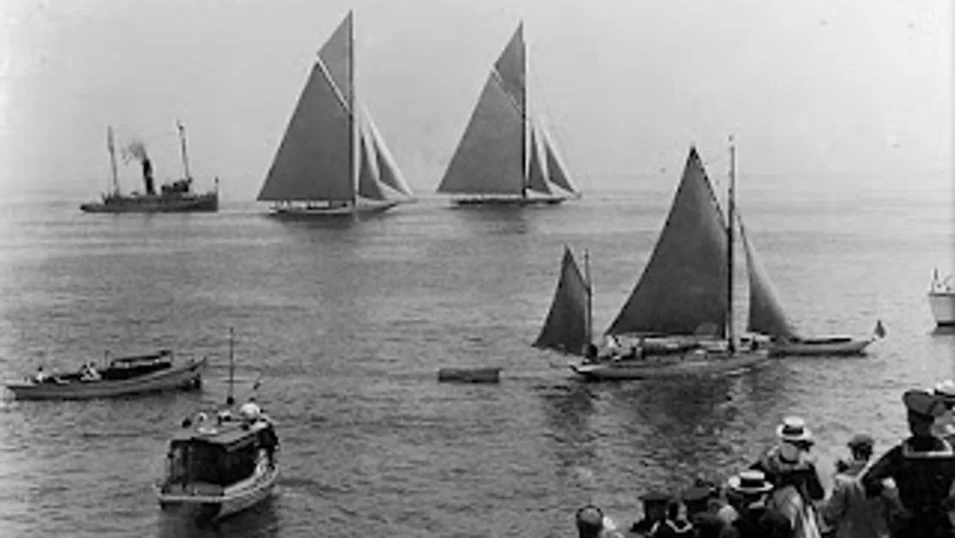
Thomas Lipton made his last attempt to lift the coveted trophy in 1930, when he was over eighty. And that is where our Shamrock V enters the arena with a length of 36.89 m and 26.84 m at waterline, a beam of 6.00 m, a displacement of 168 tonnes. Her upwind sail area was 756.4 sq. m, and a spinnaker area of 792.6 sq.m. Launched at the Camper & Nicholsons Gosport yard in April 1930, before she arrived in the New World, she covered over 700 nautical miles and took part in 22 races, winning 15 of them. But let us take a little pause on the eve of the decisive match and take a closer look at the J family.
Noble blood
In 1902 yacht designer Nathanael Herreshoff, who had built more than one winning yacht, devised the rule for measuring and rating yachts initially known as "Herreshoff Rule", and in 1903 the New York Yacht Club officially accepted it as the Universal Rule for Yachts (in Europe they adopted a similar formula named the International, or the Metre rule). Based on the length, displacement and sail area each yacht was rated, which was later used to calculate the Time Correction Factor (T.C.F), so that disparate yachts could race against each other. Having identified a few ranges, all the yachts fell within ranges named with letters: multi-mast classes running from Class A to H, and single mast boats from Class I to S.
Due to the increasingly “extreme” character of the participants, America’s Cup organizing committee made a decision to use the Universal Rule, too, and for the races of 1930, 1934 and 1937 they chose the J Class of single-masted yachts. Their maximum length (LOA) was limited to 120 ft (36 m), and 76-87 ft (23-26 m) at waterline (LWL), while the displacement had to be over 160 tonnes, and the rig had to be Bermudian. In addition, there was also Lloyd’s requirement for yachts to sail to the match on their "own bottom." There were no other strict requirements, which allowed the builders to enter a “technology race”, which, in fact, is still in progress.
There are just ten original J Class yachts: four were built in Great Britain and six in the US. They were the pinnacle of constructive thought for the time, and continue fascinating the seafarers. It seems that humankind has not come up with anything more beautiful in the sailing fleet yet: the aesthetics and the technical parameters are in absolute harmony. It is an unfading classic. They say that those who have not seen a J yacht at full speed, have not seen the beauty.
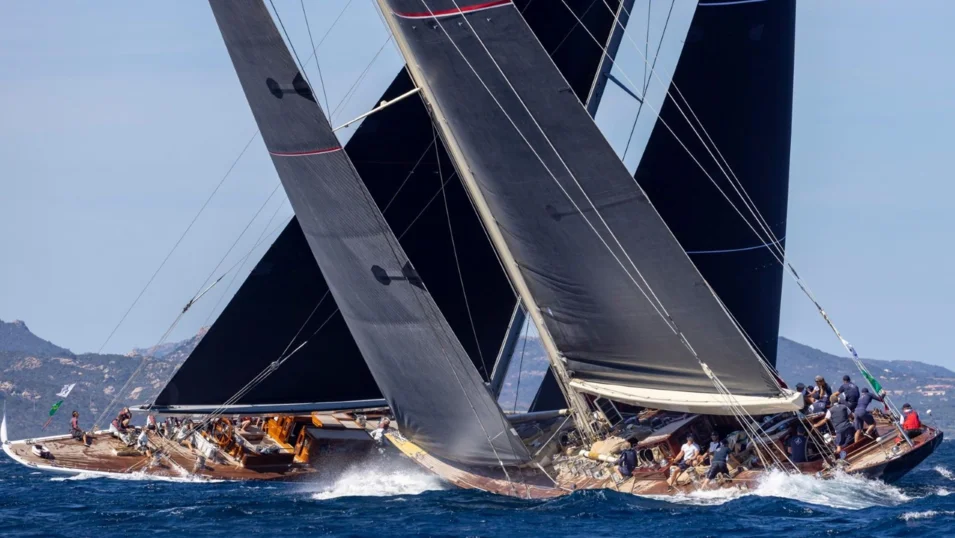
During World War II the Cup was not challenged, and in 1958, when the race resumed, J Class gave way to more affordable 12-metre yachts. Being aware of the beauty and drive that the sailing sport was losing with the departure of J’s, in the 1980s there were enthusiasts who started fighting for their comeback. In 2000 they created a J class association, and at present there are nine J Class boats. Special races are arranged for them, and in. 2017 they were invited back to America’s Cup to take part in an exclusive four-day match, as the organizers believed that the presence of J Class is an opportunity to see both the present of the regatta, and its history.
What was her fate like?
In 1930 there was a decisive match for Shamrock V and Enterprise, seven one-on-ones. The light-weight American, which boasted the world’s first duralumin mast and a Park Avenue boom, finished the first two races by a wide margin. Shamrock V was a lot heavier, as she was built to be more seaworthy and liveable – let us not forget she had to cross the Atlantic with a large crew on board to take part in the match. However, in the third race she won the pre-start duel. But then her main halyard parted, and her sail collapsed to the deck – and so did all the hopes. When Enterprise beat her rival in the fourth round, the race finished prematurely with Americans’ victory.
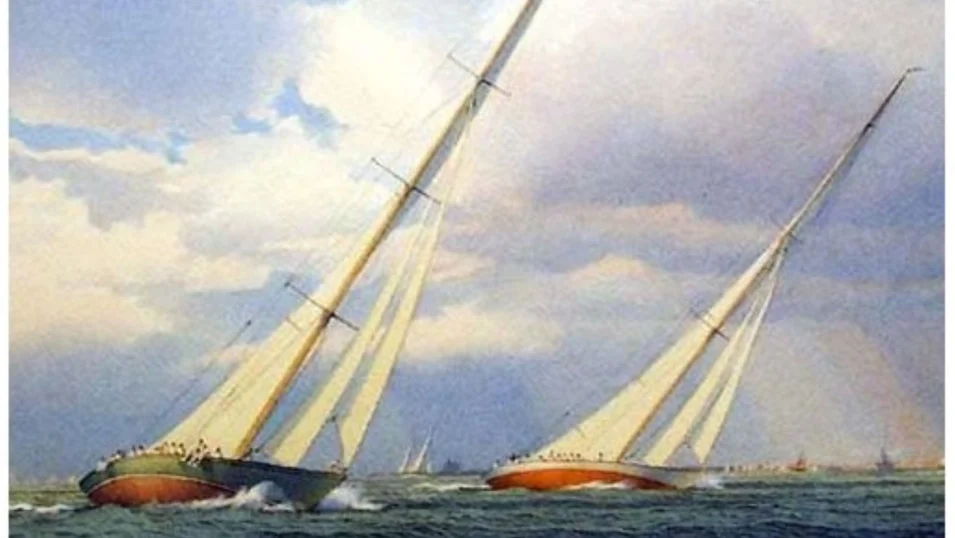
Sir Lipton spent almost 30 years of his life and millions of pounds to bring the trophy back to Britain. But his dream never came true, and a year later he passed away. But his passion gave the regatta a powerful impetus to develop, making the competitors respond to innovative challenges, without which the history of professional yachting and of America's Cup – which is still the most technically challenging sailing competition – would have been absolutely different.
Before his death, Sir Thomas Lipton sold Shamrock V to an old friend of his, the British aviation industrialist, Sir Thomas Sopwith, who later sold it to Sir Richard Fairey of Fairey Aviation. After the war the yacht was bought by the Italian senator and industrialist, Mario Crespi, who renamed her Quadrifoglio (which means “shamrock” in Italian) and reconstructed her with a focus on comfort. After his death in 1962 Shamrock V barely escaped scrappage – she was saved by yachtsman Piero Scanu just two weeks before she was supposed to be broken up. He initiated an overhaul of the boat at Camper & Nicholsons yacht: the hull plating and the deck were given special attention, and she got a new spar and an engine.
In 1986, having come back to the ownership of the Lipton Tea Company, the yacht acquired her English name again, and thanks to the effort taken by classic boat enthusiast, Elizabeth Meyer, she got back her authentic form. In September 1989 Shamrock V and the restored Endeavour met again, and the J Class in Newport was a triumph.
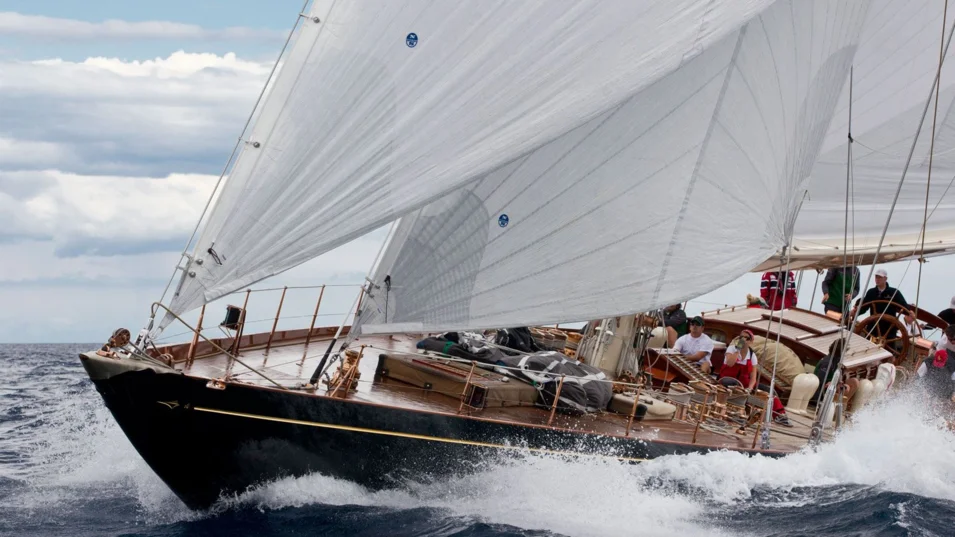
At the end of 1990s there was a new owner and a new refit: at Pendennis shipyard with the funds from Brazilian businessman, Marcos de Moraes, and under the supervision of Dykstra Architects the yacht returned to her original deck structures and rig, as well as improved her ballast ratio and performance characteristics. The refreshed veteran became a regular at Les Voiles de Saint-Tropez, Panerai Classic, St Barths Bucket and other classic yacht regattas.
In 2016 Shamrock V changed her owner again, underwent another refit and headed for Bermuda to take part in J Class regatta as part of America’s Cup 2017.
And suddenly… a collision. If only it was just a hole. The yacht got considerable structural damage: some planking split, the frames got bent, the bulkheads cracked. Sea water got inside, and as the damage assessment took long, eventually salt blocked all the mechanical systems, and rust and rot struck the hull.
Revival of the icon
The broken boat was brought back to Europe and laid up ashore, after which she was put up for sale for six million pounds. Her current owner, an experienced British yachtsman and an ardent fan of classic boats, bought her in 2022 and embarked on the masterpiece’s resuscitation immediately.
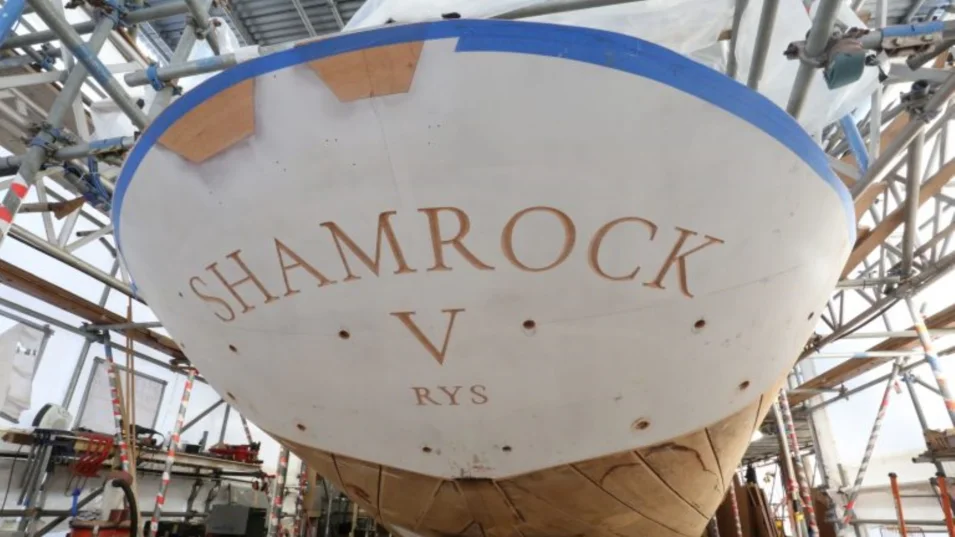
The list of defects took 10 pages! To house the project, the owner had to build a tent the size of two tennis courts in Saxon Wharf marina in Southampton, and rent the adjacent hangars and warehouses. The hull was stripped down “to the last bolt”.
About 62% of the steel frame was salvaged, 6500 bronze alloy bolts were replaced, 95% of teak was removed and reconditioned. 70% of the mechanical systems were reconditioned. She was remasted and got new rigging. The interior was redesigned in accordance with a retro style.
The massive undertaking required over 100,000 man-hours of double shifts and took a record time of just two years. The chief shipwright, Giles Brotherton, a veteran of some of the world’s most storied classic restorations seems to be happy with the result: “It is very rare to be able to work on a revival of this scale and ambition. Some of our artisans were using hand tools that were used on Shamrock’s original build. It is undoubtedly the biggest and arguably the most important yacht restoration in the world today.”
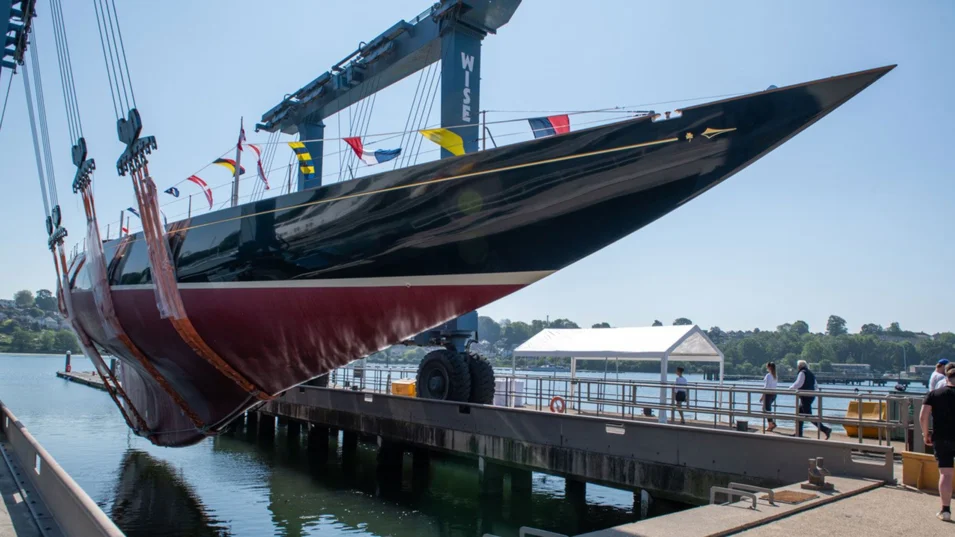
On 20 May 2024 the restored Shamrock V hit water again. The first trials in the Solent proved she is in excellent shape. In the summer she will have a run-in period in the Mediterranean, and in autumn, just like once in her youth, she’ll go across the Atlantic again, to start in America’s Cup J Class Regatta in October. Good luck to the Queen.
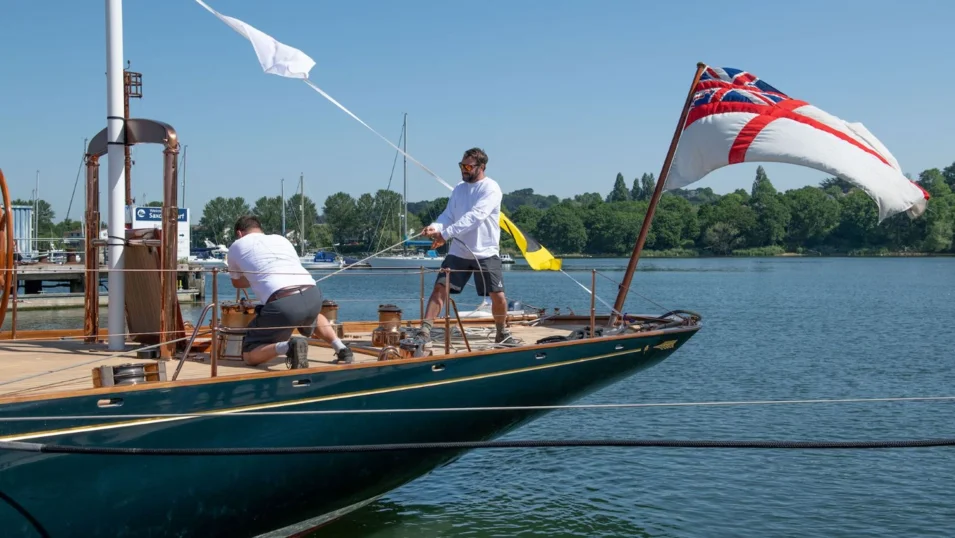
You have successfully subscribed to our newsletter
